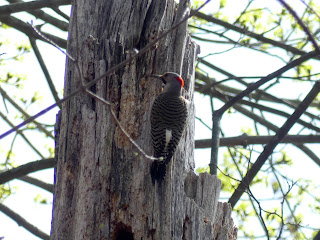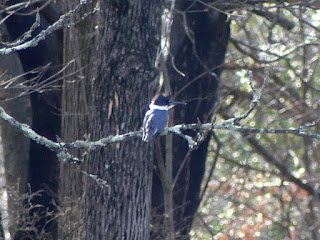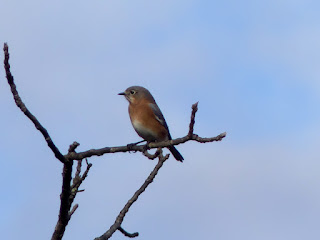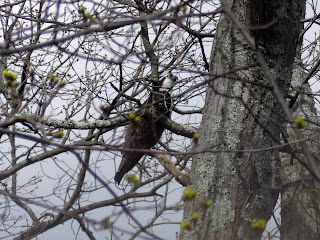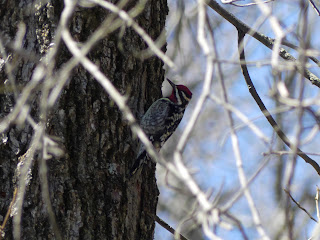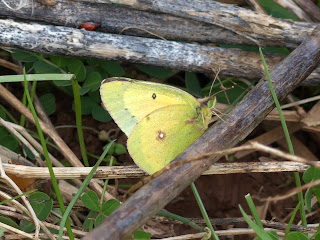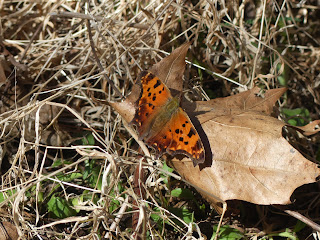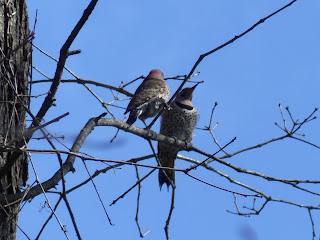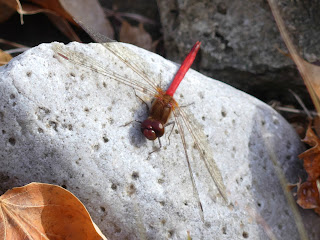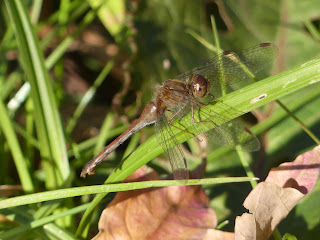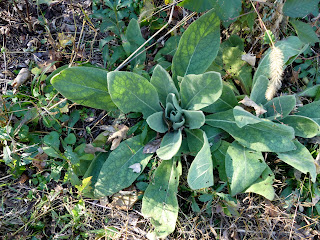Sandhill Cranes

Though my Sibley Guide to Birds suggests they should be rarely spotted here in New Jersey, it's fairly common to see a flock of Sandhill Cranes in Franklin Township most winters. This is a species that's mostly been a bird living more in the central part of the continent, wintering in Mexico and Texas while wintering in central Canada and some parts of the Midwest US. (They're named after the Sandhills of Nebraska.) But these cranes apparently didn't get the memo and are wintering with us instead. There seems to be a lot more NJ sightings of cranes , including some apparently hybridizing with a European cousin, the Common Crane . AFAIK the cranes in Franklin aren't hybrids but pure Sandhills. From a distance these guys might give you a Great Blue Heron vibe, though the Sandhill Crane is somewhat bigger bird with a straighter neck. They're also birds that are frequently found in a flock, while Great Blue Herons live more solitary lives. And while Great Blue H...

